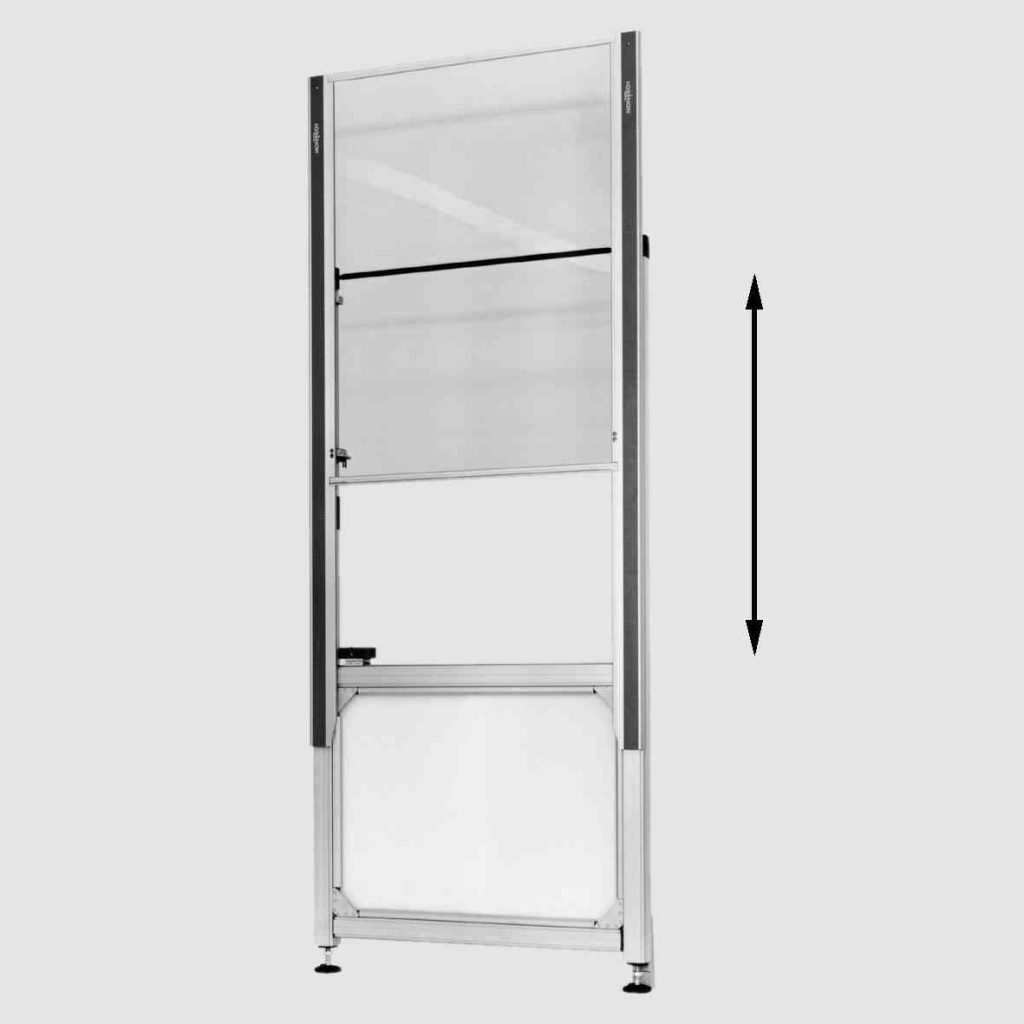There are many hazards in production environments. Safety measures are therefore essential. By specifically protecting machines and systems, protective enclosures prevent accidents, minimize potential risks, and increase production efficiency.
Protective enclosures are special barriers used to restrict access to hazardous machinery and equipment. They provide physical protection to production workers from potential hazards such as rotating parts, sharp edges, electrical components, and chemicals. The clear separation between human beings and machines prevents accidents, injuries, and damage and significantly improves occupational safety and health protection in production facilities.
Separating and non-separating protective enclosures
In principle, protective enclosures can be divided into separating and non-separating protective enclosures. As their name suggests, separating protective enclosures are physical barriers that keep production personnel out of hazardous areas. To do this, separating protective enclosures enclose the machines and systems completely, which prevents access to potentially hazardous components. Examples of separating protective enclosures are lattice fences, protective doors, and locks.

Non-separating protective enclosures also provide a barrier between users and sources of danger. In contrast to the separating protective enclosures, they do not completely block access to the machines and systems. Their main objective is to ensure a safe working environment by identifying hazards early and taking appropriate safety measures. Examples of non-separating protective enclosures are light barriers, safety laser scanners, and safety sensors.
Benefits of protective enclosures
By preventing or restricting access to hazardous areas, protective enclosures are primarily designed to protect employees. But that’s not all: Protective enclosures also protect the machines and equipment from damage. The physical barrier eliminates unintended contact and external influences. In the long term, this ensures a longer service life for machines and systems. In addition, protective enclosures also increase efficiency because the protective enclosures minimize potential accident risks and eliminate employees’ safety concerns. Employees can focus better on their tasks, which improves productivity. Last but not least, companies comply with occupational health and safety standards by using protective enclosures and they also avoid possible legal consequences. Protective enclosures are often required by law.

The quality must be right
There are numerous protective enclosures on the market. However, only high-quality protective enclosures provide the desired protection and have a long service life. From both the financial and safety points of view, it’s a good idea to pay attention to their robustness and longevity when purchasing protective enclosures. They should meet the specific requirements of the production environment. Similarly crucial is ease of use. A well-designed protective enclosure should be easy to use and help keep production processes efficient. A user-friendly design not only simplifies handling, but also minimizes potential sources of error or delays.
Customers can rely on Montech AG’s products. This Swiss company specializes in the industrialization and standardization of state-of-the-art, unusual belt conveyors, transfer systems, and innovative aluminum framing systems. Whether protective walls or hoods, we offer a wide range of protective enclosures for every need, made of the highest quality materials, and in various sizes.

